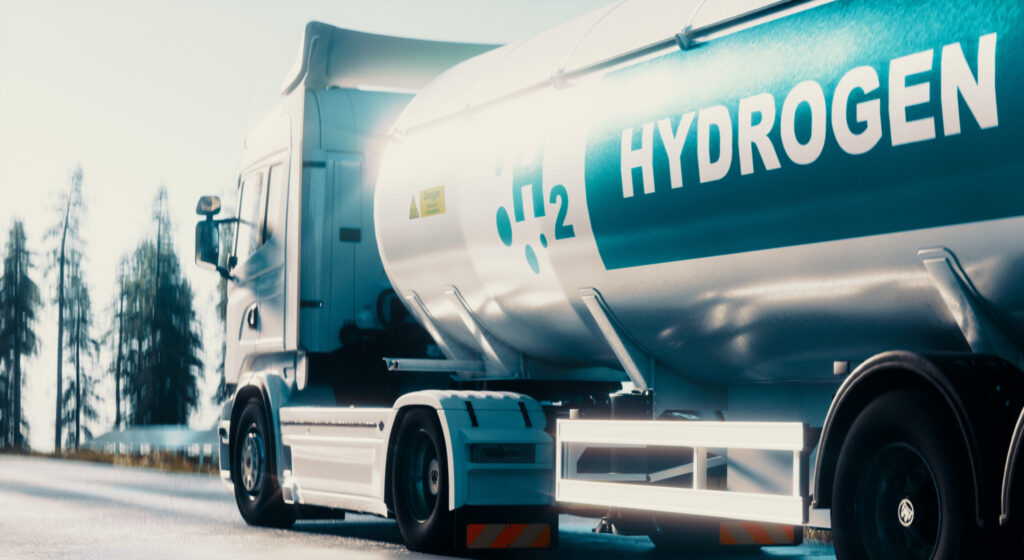Low-carbon fuels crucial in transitioning to ZEVs: Pembina Institute
While electrification is the quickest and most economical method for reducing emissions in the medium- and heavy-duty vehicle (MHDV) sector and it is currently applicable to most vehicle classes, clean fuels will play a crucial role in the industry’s transition to zero-emission trucks.
That’s the finding of Canada’s Pembina Institute, revealed in its most recent report on low-carbon fuel choices for road freight: biodiesel, renewable diesel, renewable natural gas, and hydrogen.
The transportation sector accounts for nearly a quarter of Canada’s total greenhouse gases, and MHDVs produce 37% of those emissions. But even though the federal government plans to decarbonize 35% of all new trucks by 2030, nearly 70% of medium-duty vehicles and 95% of heavy-duty vehicles will still run on internal combustion engines in 2030.
“While most trucks and buses are electrifiable, conventional fleets will remain on the road over the next two decades or so as internal combustion engine vehicles gradually reach their natural end-cycle,” the Pembina Institute said in a news release.

But the impending federal regulations remain. Combined with the total cost of operations and environmental targets, it has initiated a shift among fleet owners to low- and zero-emission vehicles, and many are starting to make sizable investments to shrink the carbon footprint of their road freight inventory. And industry members should plan their investment strategy carefully, said Adam Thorn, transportation director at the Pembina Institute.
He adds that there are certain vehicle classes, like long-haul trucks, that face technical and design challenges with electrification. For these vehicles, alternative fuels, particularly hydrogen, could serve as a viable long-term solution during the transition period.
However, any decarbonization strategy that includes clean fuels needs to consider how long these fuels will be used. According to the study, low-carbon fuel is often best thought of as a temporary measure, until an internal combustion vehicle is replaced with an electric one. Within a discrete segment of vehicle categories, however, clean fuels, namely hydrogen, may well be useful over the long term.
Hydrogen use
And although hydrogen-powered vehicles produce zero tailpipe emissions, the benefits of eliminating tailpipe emissions are offset to some degree, given that almost all hydrogen is currently produced using carbon-intensive methods, since low-carbon hydrogen can only be produced at a very high cost.
However, post-2035, hydrogen is the most viable pathway for reducing tailpipe emissions from longhaul trucks and its decarbonization potential is maximized when clean energy is used for its production, the study found.

“In a scenario where hydrogen fuel-cell vehicles are commercially viable and the cost of hydrogen fuel is on par with the cost of gasoline or diesel, this type of vehicle is best suited for long-haul transport and is preferable to battery electric, given the high energy density of fuel cells and the fast-fill characteristics.”
However, if liquefied hydrogen is used, emissions are increased due to higher energy and storage needs. A hydrogen vehicle that uses liquefied fossil hydrogen would produce emissions similar to those of diesel vehicles.
Biodiesel & renewable diesel
Biodiesel and renewable diesel are also suitable options for road freight operating on diesel-fueled engines. Both biofuels are less carbon-intensive than diesel and can contribute to decarbonization during the transition period, especially for vehicles that are hard to electrify.
Renewable diesel works better because it can easily replace regular diesel without requiring changes to trucks. However, both types need good policies to make sure they are made in environmentally friendly ways and are available in sufficient amounts.
“Good policy will be critical to fostering sustainable supply and accounting for land use impacts. While scalability is a concern, that could be addressed with increased crushing capacity, feedstock innovation, and higher yields,” the report reads.
Biofuels: a cautionary note
A cautionary note regarding the possible widespread use of biodiesel is that diesel mixed with biodiesel still produces overall tailpipe emissions. Therefore, biodiesel should be viewed primarily as a transitional fuel, serving as an interim solution. Its deployment should be targeted towards vehicles that have not yet been electrified, or in areas where there is inadequate charging infrastructure. However, operational challenges in cold weather mean that even in the case of road freight, the utility of biodiesel will be limited.
Another significant concern with biofuels highlighted in the report is their reliance on agricultural land for fuel crop production, which can potentially increase net emissions, due to the emissions generated by crop cultivation, as well as emissions produced by diverting land from its prior use to grow crops for both biofuel or food.
Renewable diesel no option for medium-duty & short-haul
And while biodiesel is commercially available in Canada through a combination of imports and domestic production (Canada imported around 400 million liters of biodiesel from the U.S., which represents about 2% of the total 18.3 billion liters of diesel consumed nationwide), for renewable diesel to make a significant contribution to decarbonization, it will have to become more widely available commercially.
“Stakeholders were of the view that British Columbia and Quebec are the only two provinces where renewable diesel is a viable option, due to favorable policy. Canada has recently started producing relatively small quantities of renewable diesel through facilities in Prince George, British Columbia and Come-By-Chance in Newfoundland, although not yet at the volume required to meet demand,” the report reads.
Amid the challenges in supply, the study suggests that renewable diesel may not be a major player in the decarbonization efforts for medium-duty, short-haul and last-mile delivery vehicles. In these vehicle categories, electrification presents a more viable and cost-effective option, compared to adopting low-carbon fuels where diesel is currently utilized.
Renewable natural gas
While renewable natural gas (RNG) can be deployed in trucks operating on natural gas, there are uncertainties related to adequate supply.
In general, natural gas vehicles and associated fueling infrastructure have not penetrated widely across Canada. In 2019, there were only 41 operational public compressed natural gas refueling stations, down from 72 in 2010, according to the report.
Should the supply increase, the industry will have to make significant investments in infrastructure and adoption of trucks that operate on this alternative fuel.

Canada’s RNG capacity
Canada’s RNG capacity is expected to increase in 2025, and while in B.C. and Quebec a certain amount of RNG is mandated to be mixed into the general gas supply, Ontario does not have such a mandate, which enables the province’s potential to direct all RNG produced there could be towards the transportation sector.
It can be readily used in existing fueling infrastructure and is compatible with gas-powered trucks.
“Until recently, one barrier to the widespread adoption of gas-fueled long-haul trucks was that [the] ones suitable for the Canadian trucking industry, which pull heavier weights than American trucks were not commercially available. However, Cummins, an American-based engine manufacturer, has recently introduced a 15-litre engine capable of supporting Canadian payloads, which could make natural gas for long-haul trucking a viable option and therefore straightforward to refuel using RNG,” the report reads.
To decarbonize MHDVs fueled by gas, RNG must be a substantial part of the fuel mix. According to Pembina’s study, in a scenario where Class 8 long-haul trucks run entirely on RNG, the emissions over the lifetime of the vehicle could drop by as much as 55%.
Have your say
This is a moderated forum. Comments will no longer be published unless they are accompanied by a first and last name and a verifiable email address. (Today's Trucking will not publish or share the email address.) Profane language and content deemed to be libelous, racist, or threatening in nature will not be published under any circumstances.